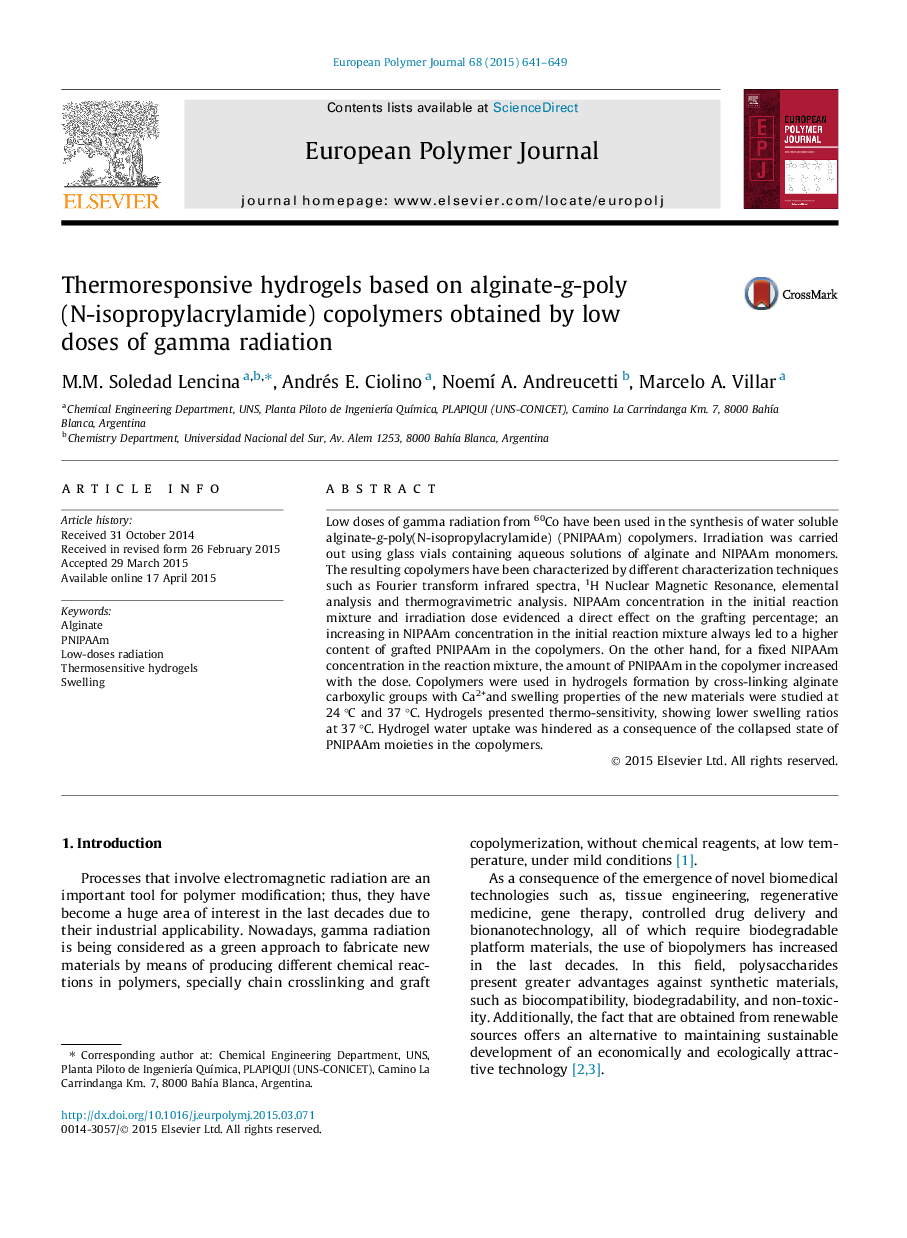| Article ID | Journal | Published Year | Pages | File Type |
|---|---|---|---|---|
| 1395112 | European Polymer Journal | 2015 | 9 Pages |
•Alginate-g-poly(N-isopropylacrylamide) (PNIPAAm) copolymers were synthesized.•Low doses of 60Co gamma radiation lead to thermosensitive water-soluble copolymers.•Hydrogels were formed using calcium ions to crosslink alginate-based copolymers.•Swelling ratios were lower at 37 °C than at 24 °C, due to PNIPAAm contribution.
Low doses of gamma radiation from 60Co have been used in the synthesis of water soluble alginate-g-poly(N-isopropylacrylamide) (PNIPAAm) copolymers. Irradiation was carried out using glass vials containing aqueous solutions of alginate and NIPAAm monomers. The resulting copolymers have been characterized by different characterization techniques such as Fourier transform infrared spectra, 1H Nuclear Magnetic Resonance, elemental analysis and thermogravimetric analysis. NIPAAm concentration in the initial reaction mixture and irradiation dose evidenced a direct effect on the grafting percentage; an increasing in NIPAAm concentration in the initial reaction mixture always led to a higher content of grafted PNIPAAm in the copolymers. On the other hand, for a fixed NIPAAm concentration in the reaction mixture, the amount of PNIPAAm in the copolymer increased with the dose. Copolymers were used in hydrogels formation by cross-linking alginate carboxylic groups with Ca2+and swelling properties of the new materials were studied at 24 °C and 37 °C. Hydrogels presented thermo-sensitivity, showing lower swelling ratios at 37 °C. Hydrogel water uptake was hindered as a consequence of the collapsed state of PNIPAAm moieties in the copolymers.
Graphical abstractFigure optionsDownload full-size imageDownload as PowerPoint slide
